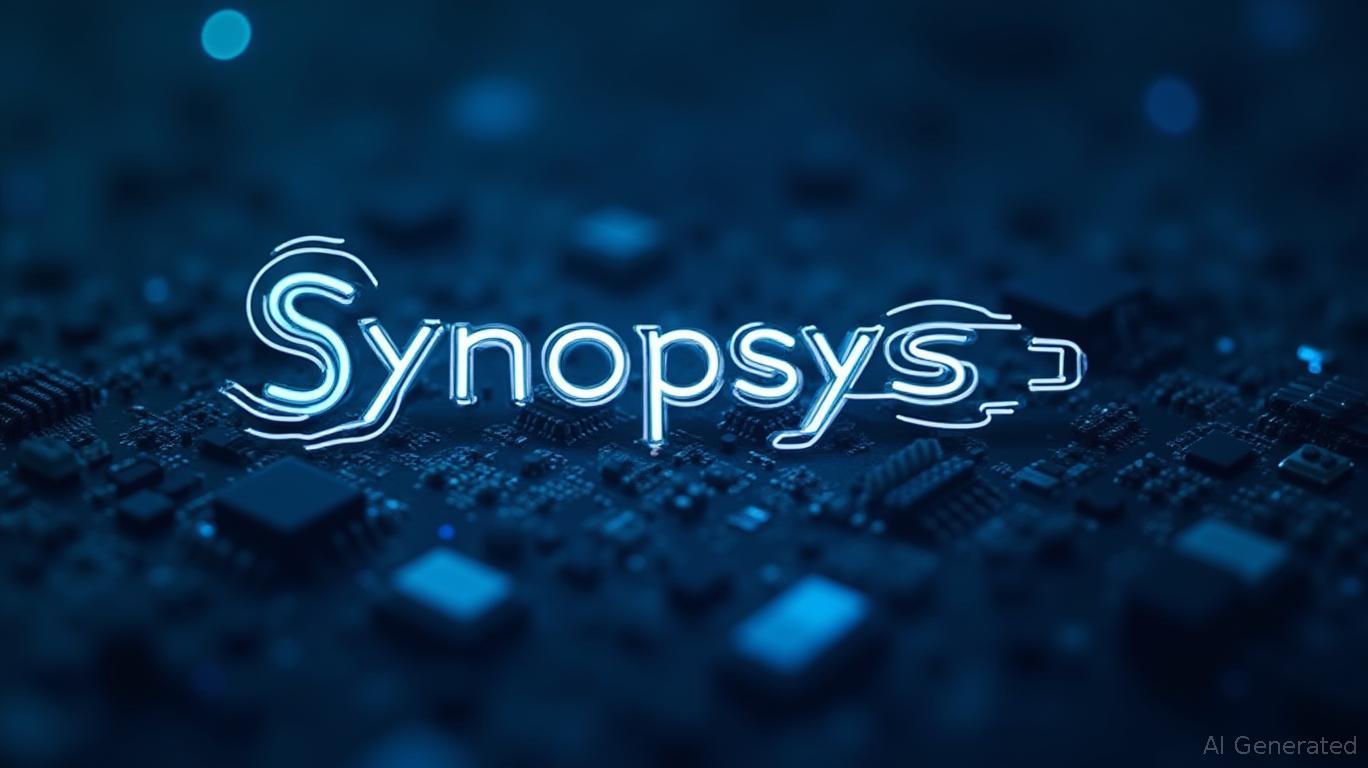Synopsys: Navigating Geopolitical Storms to Secure Long-Term Dominance in EDA
The suspension of Synopsys' FY2025 financial guidance on May 29, 2025, marks a pivotal moment in the semiconductor industry's battle with U.S.-China trade tensions. While immediate concerns center on the company's 16% China-derived revenue stream, the strategic narrative is far more nuanced. Synopsys' leadership in electronic design automation (EDA) software positions it as both a geopolitical pawn and a beneficiary of global tech fragmentation—a duality that could cement its long-term dominance.

The Immediate Catalyst: BIS Restrictions and the China Dilemma
The U.S. Bureau of Industry and Security's (BIS) May 29 letter imposed new export controls requiring licenses for sales of advanced EDA tools to Chinese entities. This follows years of escalating restrictions, including the 2023 rules targeting supercomputing chips and the addition of 30+ Chinese entities to the Entity List. While
The Q2 results, showing $1.604 billion in revenue (beating expectations by $30 million) and $3.67 non-GAAP EPS, underscore Synopsys' resilience. However, the BIS move now casts a shadow over its FY2025 targets of $6.745–6.805 billion in revenue and $15.11–15.19 non-GAAP EPS. A key question emerges: Can Synopsys navigate this regulatory minefield without ceding market share to Chinese rivals?
Long-Term Risks: The China Dependency and the "Self-Reliance" Wildcard
China's status as a critical revenue driver (16% of FY2024 sales) is undeniable. The BIS rules threaten to erode this, especially if licenses are granted sparingly. Analysts estimate a potential 20–30% revenue drop in China over the next 12–18 months. Worse, Beijing's push for tech self-reliance—accelerated by these restrictions—could fast-track domestic EDA alternatives like Huada Tech or Tongchuan, reducing reliance on U.S. tools.
Yet, Synopsys' entrenched position in global supply chains offers a counterweight. Its software is irreplaceable for designing advanced chips, even as China invests in alternatives. The 90-day tariff truce agreed in Geneva adds uncertainty, but the structural shift toward tech decoupling is irreversible. Synopsys must balance compliance with BIS rules while ensuring its tools remain indispensable to China's chip designers.
Strategic Opportunities: Monopoly Power Meets Market Fragmentation
Synopsys' 30%+ operating margins and $14.1 billion cash pile give it the flexibility to weather near-term headwinds. Its acquisition of Ansys (pending regulatory approval) adds critical simulation capabilities, positioning it to serve the $700+ billion AI and silicon proliferation markets. While China's growth slows, opportunities in AI-driven chip design, software-defined systems, and automotive semiconductors could offset losses.
Moreover, the BIS restrictions may accelerate Synopsys' dominance in non-China markets. U.S. and European chipmakers, fearing supply chain disruptions, could prioritize Synopsys over Chinese alternatives. The $1.3 billion in projected FY2025 free cash flow provides a war chest to invest in R&D and acquisitions, further widening its lead over competitors.
The Investment Case: Buy the Dip, Own the Monopoly
Synopsys' valuation—trading at ~25x forward non-GAAP EPS—remains reasonable given its 15%+ annual revenue growth trajectory (pre-BIS restrictions). While near-term volatility is inevitable, three catalysts suggest this is a buying opportunity:
1. Regulatory Clarity: BIS's case-by-case licensing approach leaves room for Synopsys to negotiate exemptions for non-advanced tools.
2. China's "License Shopping": Even with restrictions, Chinese firms will prioritize Synopsys' software for high-end designs, maintaining revenue.
3. Ansys Synergy: The acquisition could unlock $1+ billion in annual synergies, bolstering margins and offsetting China-related losses.
Final Call: A Long-Term Play on Tech Supremacy
Synopsys isn't just a stock—it's a bet on who will control the next era of chip design. While geopolitical storms will test its resilience, the company's monopoly in EDA, combined with its cash flow and strategic moves like the Ansys deal, positions it to emerge stronger. For investors willing to endure short-term turbulence, Synopsys offers a rare chance to own a pillar of the global tech ecosystem.
Act now before the next regulatory update resets expectations—and valuations—higher.

Comments
No comments yet